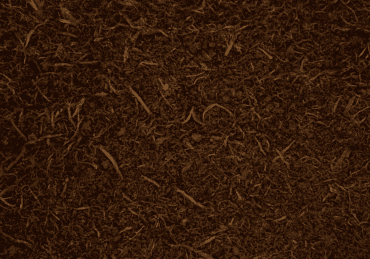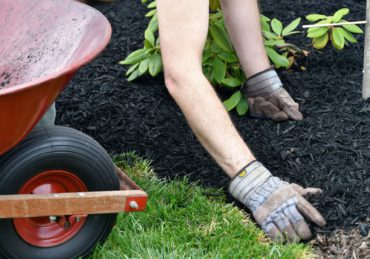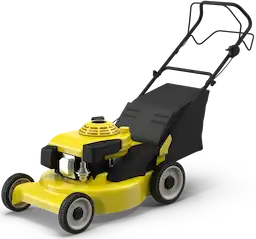You’ve cleared out the beds, pruned the shrubs, and now your landscape looks like it’s missing something. That “something” is usually mulch, and figuring out how much it’ll cost in 2025 isn’t as simple as checking the tag at your local garden center.
The price of mulch this year depends on more than just what you’re buying. Delivery, installation, volume, and material type all play a role in what you’ll pay per yard or bag. Let’s walk through everything that affects cost so you can budget without surprises, and avoid common mistakes along the way.
Understanding What “a Yard of Mulch” Means
You’d be surprised how often folks misjudge the size of a cubic yard until it’s dumped in their driveway. One yard of mulch doesn’t sound like much until you see it piled waist-high.

What Is a Cubic Yard?
A cubic yard equals 27 cubic feet, think of it as a 3-foot by 3-foot by 3-foot block of mulch. It’s the standard measurement for bulk mulch and how suppliers typically sell it when delivering by the truckload.
Bag-to-Yard Conversions
Bagged mulch usually comes in 2-cubic-foot bags. It takes 13–14 bags to equal one full yard. That math surprises a lot of homeowners who thought they were saving money by buying by the bag.
Reality Check: If you’re covering more than 100 square feet, bulk mulch often comes out cheaper per cubic foot than bagged, even after adding delivery.
Coverage Depth and Area
At a 2-inch depth, one yard of mulch covers roughly 160 square feet. Increase that to 3 inches for better weed control and moisture retention, and your coverage drops to around 108 square feet.
What Drives the Cost of Mulch in 2025
You might see one yard listed for $35 at one supplier and $110 at another, and both prices might be right. Mulch pricing in 2025 varies based on what it’s made of, how much you need, and where you’re located.
Material Type Matters
Shredded hardwood, bark, dyed mulch, pine straw, rubber, and stone mulches all come with different price tags. Natural, undyed wood mulch is usually the most affordable. Dyed options (especially black or red) bump up the cost due to added processing.
Rubber or stone mulch costs significantly more upfront but lasts longer. Organic mulches break down, feed the soil, and need replacing every year or two.
Volume Discounts and Minimums
Most bulk mulch suppliers offer better per-yard pricing the more you order. Buying 5+ yards typically knocks $5–$10 off per yard compared to smaller orders. Some have minimum delivery volumes, too, typically 2 or 3 yards.
Pro Tip: Coordinate with neighbors. Sharing a large delivery can help you all get the bulk discount without ordering more than you need.
Regional Factors and Delivery Fees
Expect higher mulch prices in urban areas, especially in the Northeast and West Coast. Delivery fees vary widely: $20–$80 depending on distance and dump method. Some companies waive fees over certain volumes; others charge per mile.
Installation adds another cost layer, typically $20–$45 per cubic yard, if you’re hiring pros to spread it.
| U.S. Region | Installed Mulch Cost per Cubic Yard (2025) | Typical Delivery Range |
|---|---|---|
| Northeast | $110 – $150 | $40 – $80 |
| Midwest | $90 – $130 | $30 – $70 |
| Southeast | $85 – $125 | $25 – $65 |
| Southwest | $95 – $140 | $30 – $75 |
| Pacific Coast | $115 – $160 | $50 – $85 |
| Mountain West | $100 – $145 | $35 – $75 |
Typical Price Ranges for Bulk and Bagged Mulch
When you’re comparing mulch prices, don’t just look at the sticker. The true cost depends on how much you need, how it’s delivered, and who’s doing the work.
| Mulch Category | Mulch Type | Estimated Price Per Cubic Yard (Installed) |
|---|---|---|
| Organic Mulch | Pine Straw | $20 – $55 |
| Pine Bark | $30 | |
| Bark Mulch | $30 – $100 | |
| Wood Chips | $30 – $110 | |
| Tea Tree Mulch | $45 | |
| Hemlock | $50 | |
| Redwood | $65 | |
| Hay | $60 | |
| Playground (Wood Fiber) | $65 | |
| Shredded Hardwood | $40 – $70 | |
| Colored & Decorative | Cedar Mulch | $100 |
| Cypress Mulch | $110 | |
| Synthetic Pine Straw | $40 – $60 | |
| Specialty Mulch | Crushed Seashell | $40 – $400 |
| Glass Mulch | $50 – $70 | |
| Inorganic Mulch | Rubber Mulch | $80 – $140 |
| Stone / Gravel | $50 – $180 | |
| Lava Rock | $50 – $180 |
Bulk Mulch (Material-Only)
In 2025, most natural wood mulches range from $30 to $55 per cubic yard for the material alone. Premium bark or dyed versions can run $60 to $110 per yard.
That’s just the product, delivery and labor aren’t included.
Installed Mulch (With Delivery + Spreading)
Full-service mulch installation (material + delivery + labor) runs $70 to $150 per yard in most regions. Heavily landscaped properties or sloped beds might cost more due to time and effort.
Some homeowners balk at these numbers, until they spend an entire Saturday shoveling mulch and end up sore for days.
Bagged Mulch at Retail Stores
Bagged mulch prices vary from $2.50 to $6.50 per bag depending on type and brand. That works out to $35 to $91 per yard if you’re buying enough bags to equal one yard.
Bag mulch can still make sense for touch-ups or small areas, but the price difference adds up fast once you pass the 10-bag mark.
Budgeting Your Project: Real-World Cost Scenarios
Most folks don’t know how to estimate mulch until they’re knee-deep in it, or short by two yards. Here’s how to avoid the guessing game.
A Common Example: 500 Square Feet of Beds
To cover 500 square feet at 3-inch depth, you’ll need around 4.6 cubic yards of mulch. Round that to 5 yards.
- Bulk only: $40/yard x 5 = $200
- Delivered and installed: $115/yard x 5 = $575
- Bagged mulch: 70 bags at $3.50 = $245
Notice how close bagged and bulk costs seem at first glance, but factor in effort, disposal, and prep, and the numbers shift.
DIY vs Pro Installation
Doing it yourself saves on labor, no question. But if you’re short on time or energy, or need 7+ yards, it’s often worth bringing in pros.
Spreading mulch takes more time than most people think, especially in tight corners or tiered beds.
Warning: Don’t forget to factor in bed prep, removing weeds, trimming edges, and leveling the surface. Skipping this step leads to mulch washing away or compacting unevenly.
Hidden Costs Homeowners Miss
If you’re removing old mulch, you may need to budget for hauling or yard waste fees. Some towns charge for curbside pickup. You might also need new edging or weed barrier fabric under certain types of mulch.
Replacement Frequency and Long-Term Cost Considerations
That fresh mulch smell wears off, and eventually, so does the mulch. Understanding lifespan and refresh cycles helps you plan, and save.
How Long Mulch Lasts
Natural wood mulch typically lasts 12–18 months before it starts breaking down and losing color. Dyed mulch fades faster in full sun. Pine straw breaks down even faster, expect to reapply twice a year.
Stone and rubber mulches last 5–10 years, but they don’t feed the soil or regulate moisture like organic mulch.
Annual vs Upfront Costs
Organic mulches cost less up front but require yearly refreshes. Inorganic mulches are expensive to install but hold up better over time.
If you’re maintaining curb appeal for resale or seasonal change, organic is usually the go-to. For low-maintenance beds, stone might pay off.
Long-Term Tradeoffs
Some homeowners try to cheap out by using too little mulch or spreading it too thin. That leads to more weeding, more watering, and sometimes redoing the job mid-season. Spending a bit more up front often reduces maintenance headaches later.
Frequently Asked Questions
What is the cheapest type of mulch?
Undyed hardwood mulch is usually the most budget-friendly, especially when bought in bulk. It offers basic weed suppression and soil protection without extras.
Is bagged mulch ever more economical than bulk?
For small jobs under 1 yard (around 13 bags), bagged mulch can be cheaper and more convenient. For anything larger, bulk almost always wins on cost per cubic foot.
How deep should I spread mulch?
Aim for 2 to 3 inches. Less than 2 inches won’t block weeds or hold moisture well. More than 4 inches can suffocate roots and trap moisture against plant stems.
Can I reuse old mulch?
If it’s not moldy or decomposed, yes. Rake it to loosen the surface and blend fresh mulch over it. Remove any matted or slimy areas.
Do dyed mulches cost more and why?
Yes, dyes and processing add to the cost. They also fade faster in direct sun and may need refreshing sooner, depending on quality and brand.
Ready to Mulch Smarter This Season?
You don’t need to guess your mulch costs or haul 80 bags into your trunk one by one. Measure your beds, decide on depth, then get a real quote.
And if you’re looking for a faster way to get your mulch delivered, spread, and cleaned up without the weekend workout, we at LawnGuru are ready when you are.
Let’s get those beds covered right the first time.





